
Most airlines now offer the opportunity for you to voluntarily offset your flight.
We have written previous articles on the subject of offsetting – see The Offset Debate.
Although the principle of offsetting is simple, the more you look into it, the more complicated it can become. To simplify matters, and also to give a diversity of voices, we have included the answers to some common questions under each one of the airlines listed below, with the information taken either from their website or the partner they are using for their carbon offsets.
This article rounds up what the airlines are currently offering. We will keep it updated as things change and have added in the option of buying Sustainable Aviation Fuel (SAF) since many airlines now offer the chance to offset at least part of your flight by paying extra for SAF.
Two points about offsets. The first is that they are voluntary – both in terms of whether you decide to use them, but also that is how they are regarded in market terms – you are buying an offset on the voluntary market. Linked to this is a second point: they are unregulated. As with the supply of any good or service, you can pay next to nothing for an offset, and it is worthless, or you can buy an expensive one – certified by one of the agencies listed below – and it will be worthwhile.
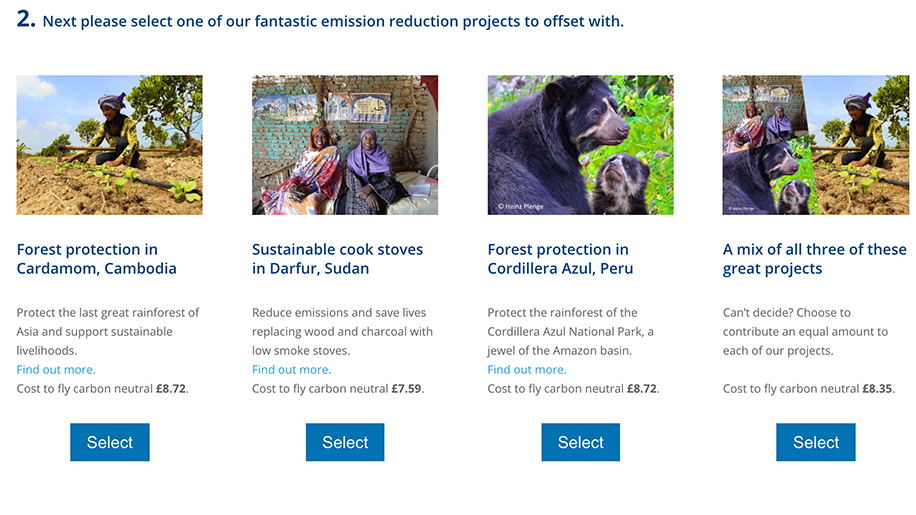
Aer Lingus
Aer Lingus offers offsets through a partnership with Pure Leap Frog. The emissions calculator is separate from the booking procedure, though there is the intention to integrate it in future. Instead you go to the home page of the Pure Leapfrog Aer Lingus page and then enter your flight details, including the class you are flying in, select your preferred project (or all three of the ones on offer) and then pay for the offset.
From the site…
What is CO2eq?
“Emissions of greenhouse gases are typically expressed in a common metric so that their impacts can be directly compared, as some gases are more potent, i.e. have a higher global warming potential than others. The international standard practice is to express greenhouse gases in carbon dioxide equivalents.”
“Carbon dioxide equivalent (CO2eq) stands for a unit based on the global warming potential (GWP) of different greenhouse gases. The CO2eq unit measures the environmental impact of one tonne of these greenhouse gases in comparison to the impact of one tonne of CO2.”
As far as charges levied are concerned, Pure Leapfrog says the following
“As a not-for-profit, Pure Leapfrog provides offsetting as a service. We seek to cover our costs and make a small contribution to our mission of helping communities to benefit from low carbon energy systems.”
“As part of covering our costs we charge a small handling fee to take account of transactional costs. Handling fee is 30p for transactions up to £10 and 50p for transactions above £10. This means that we also have a minimum offset charge of £1 to be sure these costs are covered alongside your offset purchase.”
“We track our transactional costs and the fees we charge and any ‘profit’ made on handling fees or minimum charges is passed to the Aer Lingus Carbon Fund on a regular basis.”
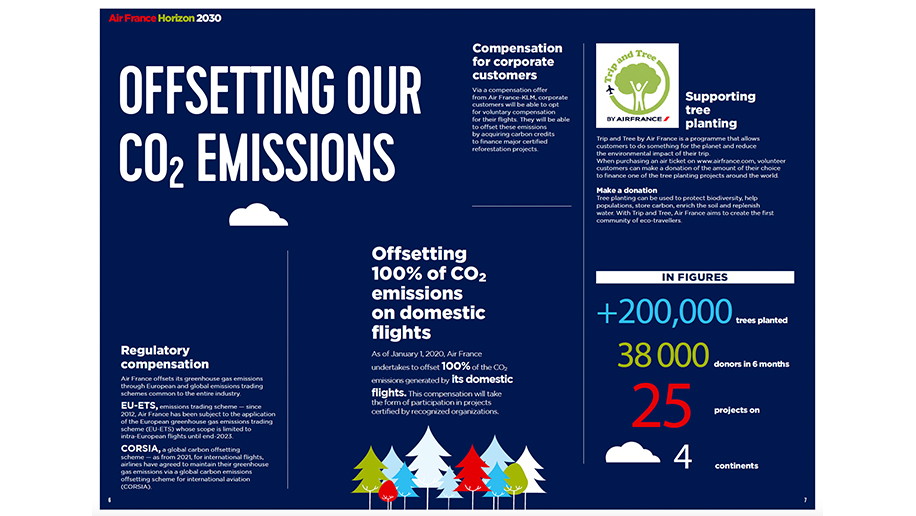
Air France
Since the beginning of 2020, Air France has offset its domestic flights. It also used to offer passengers the chance to offset flights, both domestic and international, in partnership with A Tree for You. This option seems to have been dropped in favour of offering three different levels of purchasing Sustainable Aviation Fuel (SAF). This is in addition to the surcharge that is automatically applied.
Air France increases ticket prices to pay for sustainable aviation fuel

Air New Zealand
The airline’s carbon offsetting programme is called Fly Neutral programme.
The recommended Fly Neutral price directs 25 percent of collected funds to carbon credits that offset all the carbon emissions associated with your flight. The remaining 75 percent is directed to third party projects to be used exclusively for purposes that will accelerate positive climate or biodiversity outcomes in New Zealand.
The biodiversity projects are administered through the NGO Trees That Count which uses the funds to supply additional native trees to planting projects around Aotearoa, amplifying the efforts of planting projects and supporting the restoration, regeneration, and protection of New Zealand’s native biodiversity.

American Airlines
American Airlines has partnered with Cool Effect for its carbon offset programme. The emissions calculator is separate from the booking process and the offsets go towards one of three projects:
- Mexico – preventing deforestation.
- Indonesia – protecting and restoring peatlands.
- Honduras – clean cookstoves
From the site…
How much does it cost to buy carbon credits in the voluntary market?
“More than 90 per cent of each dollar you donate goes directly to helping our projects, with a small fee of only 9.87 per cent to help us cover payment processing, research and scientific documentation, and possible registration fees. Here’s a breakdown:
- 1.5 per cent Research Fee
- 2–4 per cent Payment Processing Fee
- Registry Fee (where applicable)
- Remainder for Cool Effect Administration Fee
In its latest ESG report, AA said that so far “Thousands of customers have chosen to offset the emissions from their flights through Cool Effect since we launched the program in 2020. Companies participating in American’s Business Extra®program can redeem their points with Cool Effect to offset the carbon emissions of their business travel. And AAdvantage members can use their Loyalty Choice Rewards to redeem carbon offsets through Cool Effect as well.”
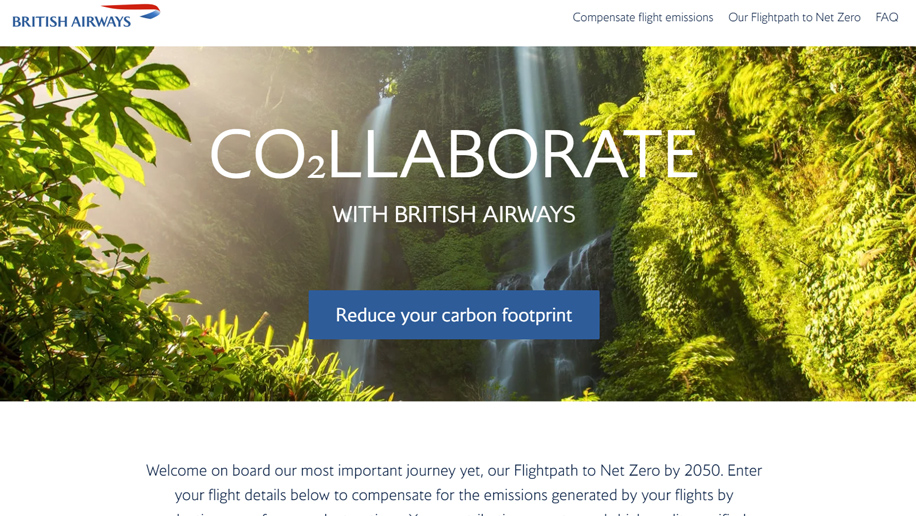
British Airways
British Airways uses the same carbon offsetting platform as fellow IAG airline – Iberia.
The CO2llaborate programme is in partnership with climate tech company CHOOOSE .
Customers can calculate their estimated impact on the environment and choose to purchase sustainable aviation fuel (SAF) to reduce their emissions, or purchase carbon offsets from certified climate projects.
It enables customers to offset the flights before, during or after their journey. It also offers more precise emissions calculations than the previous calculator, and gives customers more control over the amount of SAF versus verified carbon offsets they wish to purchase.
The SAF available on the CO2llaborate platform comes from the Phillips 66 plant in Humberside, which uses waste cooking oil as the feedstock. The SAF is delivered to British Airways via existing pipeline infrastructure that feeds directly into London Heathrow as part of the airline’s multiyear partnership with Phillips 66.
As well as being able to offset their flights before flying, Individual customers can also do so during the flight using the aircraft’s wifi portal (if fitted).
Any donations will go to carbon mitigation projects including a rainforest protection project in the Democratic Republic of the Congo and an energy-efficient cookstove project in Nigeria in line with the UN Sustainable Development Goals.
The new adjustable slider feature allows customers to have more control over where their climate contribution goes, enabling them to choose how much SAF or verified carbon offsets they want to invest in by selecting any percentage of carbon offsets with sustainable aviation fuel.
For corporate customers, the CO2llaborate platform will also offer a dedicated climate programme for companies to measure, reduce and manage the carbon emissions associated with their business flying.
Corporate customers will get access to a dashboard that shows the CO2 emissions generated from their business travel and receive monthly emissions reports. Companies will then be able to select how to address their carbon emissions by selecting specific climate solutions ranging from purchasing SAF to contributing to certified carbon offset projects. The platform enables users to track and report on their climate impact over time and learn about the climate solutions they are supporting.
The two projects for offsetting (not including SAF) are
Mai Ndombe, Democratic Republic of Congo
“Mai Ndombe REDD+ project protects wildlife, wetlands, watersheds, ecosystem integrity as well as helping some of the most marginalized people on the planet. The project is located in the second largest rainforest in the world, the Congo Basin. The project borders Lake Mai Ndombe and sits within the largest Wetland of International Importance in the world, as recognised by the Ramsar Convention.”
However, there is criticism of the project which can be read on the website of the Rainforest Foundation
This project replaces inefficient cook stoves being used by the majority of the Nigerian population with highly efficient cook stoves. The project reduces carbon emissions, improves health and prevents deforestation. You can read more about how the scheme works on the Ashden website (it describes the project as it was around 10 years ago, in Ghana, but it has since expanded to Nigeria)

Brussels Airlines
Brussels Airlines offers three ways to offset carbon emissions: buying Sustainable Aviation Fuel (SAF), certified climate protection projects run by the non-profit organization myclimate, (or a mix of the two).
The option is now offered in the booking processes of all Lufthansa Group hub airlines (Austrian, Brussels Airlines, SWISS and Lufthansa. To encourage the option, customers will be offered additional status and award miles for taking these options.
What is new is that these options can now be selected while booking, making it more convenient and attractive for the customer. Payment is made when buying the flight ticket, thus making CO2-neutral flying for passengers significantly easier.
Brussels Airlines says it has seen a preliminary conversion rate of nearly 7 per cent, above its initial target of 5 per cent.

Cathay Pacific
Cathay Pacific’s Fly Greener programme allows you to offset your flight.
There are two projects. The first is Bondhu Chula Cookstoves in Bangladesh – 90 per cent of the 160 million Bangladeshis cook on “three-stone” open fires in their homes, which wastes energy and produces smoke that causes more than 45,000 premature deaths a year. The Bondhu Chula, or the ‘friendly stove’, is designed to ensure a more efficient burn reducing fuel use and the chimney takes the harmful pollutants out of the house. The project employs local entrepreneurs to produce and distribute the stoves. Fuel consumption can be reduced by approximately 50%, leaving families with more disposable income and better health.
The second is generating clean energy from organic food waste in India
“An estimated 240million people in India are without electricity. Those who are connected suffer from poor output and regular power shortages. This causes residents to turn to natural resources for fuel, which can be harmful to health but also the local environment.
The project will distribute over 15,000 bio-digestors across India to replace fuelwood grid electricity and other fossil fuels. These units can be used to produce cooking gas, heat or even electricity on the larger scale units. Poor households benefit from saving on fuel costs and cleaner air. The slurry generated by the units can also be used as an organic fertiliser, reducing the use of chemical fertiliser.”
From the site…
How do you calculate the volume of emissions from a flight?
“For every 1 kg of jet fuel burnt in the operational phase of the flight, approximately 3.15 kg of carbon dioxide is released into the atmosphere. The total volume of fuel consumed on a flight depends on factors such as the distance travelled, wind speeds, the loading of passengers, baggage, and cargo on the aircraft. For our calculation methods, we use historic fuel consumption to derive carbon dioxide per passenger kilometre.”

Delta
Delta committed to be carbon neutral in March 2020, and so discontinued its consumer carbon offset programme. With regards to last year (2020) the airline says it is “addressing 13 million metric tons of its carbon dioxide emissions from March 1 to Dec. 31, 2020 through verified offsets”.
Delta’s offset projects include community-driven projects in Cambodia and Indonesia, “where protecting biodiversity goes hand-in-hand with helping local communities. These efforts promote sustainable livelihoods, conserve critically endangered species, support the preservation of indigenous communities’ culture and traditions, and maintain vital natural resources.”
Delta’s pledge to be the world’s first carbon neutral airline

Easyjet
We shouldn’t, strictly, include Easyjet, since you can’t offset flights with them. The airline says it is already doing the offsetting for you.
(If you still want to pay, you could always use one of the independent offset sites listed at the end of this article.)
Easyjet says that it pays (on our behalf) to offset with “… highest standard carbon offsetting projects, that meet either the Gold Standard or Verified Carbon Standard (VCS) accreditation. This means working with EcoAct and First Climate; companies that are globally recognised and respected for their standards of offsetting.”
The projects it supports include forest regeneration in South American and Africa, solar energy in India (Tamil Nadu) and in Uganda and Eritrea, helping provide access to clean water.
In its annual report, it says that in the financial year ending 2020 it ‘retired’ (paid for) “3.1 million carbon credits to offset carbon emissions from all fuel and operations” and these seem to have been with the Bale Mountains Eco-region REDD+ Project which is also known as the Oromia Forest and Wildlife Enterprise in Ethiopia which “will work to improve government and community partnerships on one hand and facilitate the development of community based local institution on the other to result in an improved forest ecosystem and landscape management in the Bale eco-region.”
From the site…
How do we calculate how much to offset?
“We will do this by calculating the total carbon equivalent using industry standard “global warming potential” values of each greenhouse gas, and multiplying them with estimated amounts of released NOx, methane, etc., which adds up to another 1-1.5 per cent on top of the CO2 calculation. We then offset the total amount.”

Etihad Airways
Etihad has a big push on sustainability, from launching ‘green’ options within its Etihad Guest programme to having a whole push to encourage passengers to fly on its B787 ‘Greenliner’.
You can offset your flights using Etihad’s relationship with Carbon Click.
Projects change. It used to be the Biogas Energy Project in Hezhang, Guizhou, China which was helping create biogas generators that turn waste into energy, providing a cheap source of energy for rural Chinese farmers.
It now is the Sichuan Household Biogas Programme which helps poor Chinese farmers recycle farm waste into clean energy. The sustainable fuel (biogas) avoids the use of dirtier cooking fuel (coal and wood) and improves air quality and health of households.

Finnair
Finnair offers offsets through Chooose. As with the other airlines using this service, passengers can calculate their flight’s emissions and offset their journey by choosing a mix of sustainable aviation fuels (SAF) and certified offset projects. The pricing varies depending on how the contribution is shared between the two.
Finnair’s previous offsetting service was discontinued in March, 2020 due to Finnish legislation, which has since then been changed to allow companies to offer CO2 offsetting services to consumers.
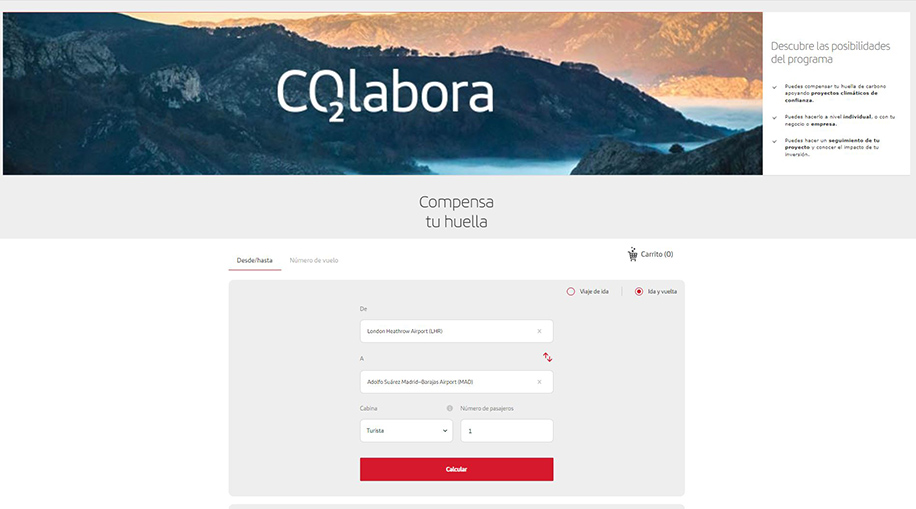
Iberia
Iberia’s offsets are through the “CO2labora” programme which supports two certified climate projects: one in Guatemala and one in Peru. The platform has been developed in collaboration with Chooose.
The footprint calculator takes into account four variables including weather, efficiency of operations, cabin class and type of aircraft.
Iberia Group says it is renewing its fleet, adding 11 aircraft to its fleet so far this year (2022); five A350-900s for long-haul routes and six A320neo for short- and medium-haul routes. The A350s are 30-35 per cent more efficient, and the short haul aircraft 15-20 per cent. Iberia Express is adding to its fleet the A321neo model, which reduces CO2 emissions by 20 per cent when compared to the aircraft it replaces. The airline has five A321neo and will incorporate the sixth aircraft of this model before the end of the year.
The two programmes are:
Izabal, on the Caribbean coast of Guatemala.
This promotes the creation of new nature reserves and maintains existing natural forests that are threatened by deforestation and unsustainable land use activities. Izabal is a wintering and stopover area for more than 120 species of migratory birds, which makes it a relevant spot for biodiversity conservation. Contributions serve to protect agroforestry ecosystems and promote ecotourism, in addition to providing resources to monitor the area and support community development programmes.
Peruvian Amazon jungle.
Seven indigenous communities belonging to the Shipibo-Conibo and Cacataibo ethnic groups are settled around the Ucayali River and manage 119,837 hectares of tropical forest. This project supports the development of socially inclusive companies, promotes the proper use of communal lands, and helps offer training for the management of natural resources.
Last April, Iberia and Chooose developed the offset programme for corporate clients, allowing them to access monthly reports showing their flights’ carbon footprint records, and giving them the chance to offset that footprint by collaborating with the two certified projects in Guatemala and Peru.

Icelandair
All carbon-offset contributions through Icelandair are used to cultivate forests in Iceland in co-operation with the Icelandic Carbon Fund, Kolviður.

JAL
The JAL Group has set up a partnership with Blue dot green Inc., for its offsets. The projects include
- Logging Promotion Project in Oguni, Kumamoto prefecture
- Deforestation prevention project in Rimba Raya Biodiversity Reserve, Indonesia
- Logging Promotion Project of 4 towns in Hokkaido
- Improving hygiene environment by investing to water infrastructure in Africa
JAL Carbon Offsets are available from “Reservation Confirmation” page when booking International tickets.
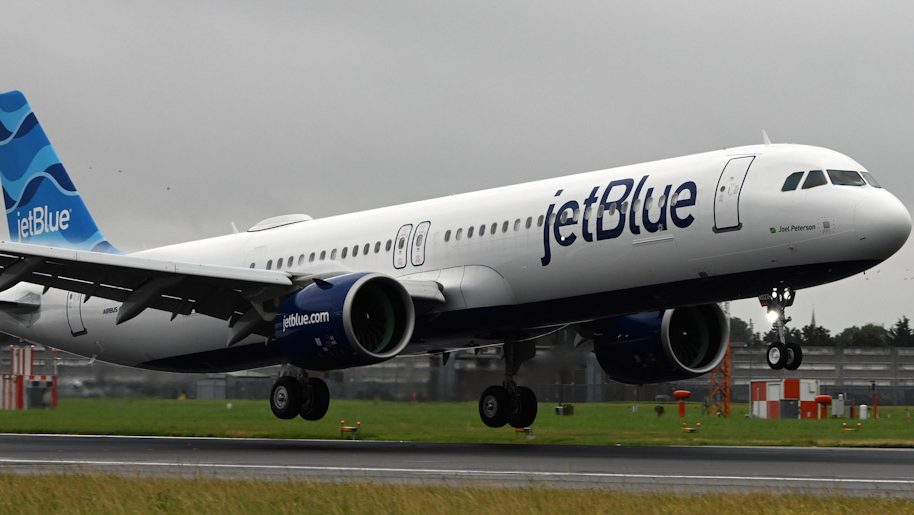
Jetblue
Jetblue has an offset programme with carbon fund.
Jetblue says “Since partnering with Carbonfund.org in 2008, Jetblue has offset over 2.6 billion pounds of CO2—that’s the equivalent of the carbon absorbed by 1.4 million acres of US forests in a year!”
However there are no details of the particular projects this has funded, or their location.

LATAM
LATAM has a corporate programme, but as yet, no customer programme for offsets.
LATAM announces alliance for the conservation of 575,000 hectares of savannah and forests

Loganair
The airline has launched a new “Green Skies” environmental programme which it says makes it “the first UK regional airline to take such an ambitious step towards managing and mitigating the environmental impact of flying”.
The non-optional fee will be included in the ticket price, with the carrier stating that “By harnessing the collective power of everyone flying with Loganair, carbon neutral flying can be achieved through the offset programme at a practical and modest cost per passenger”.
The airline says its new carbon offset programme will be “the first of its kind in the UK to directly relate the cost of flying to its environmental impact”.
Loganair said that funds raised through the new charge would be invested in initiatives including reforestation projects and wind farms, and later this year the carrier also plans to establish a new fund “to provide grants to help with the cost of establishing renewable energy projects in the communities that it serves”.
Ironically, these projects are not in Scotland. As Loganair says
“It’s vital that our carbon offset programme is accredited to the highest international standards so our customers can have full confidence in it. The EU rules (now adopted by the UK) for carbon offsets mean that de-carbonisation programmes such as the many excellent re-forestation projects in Scotland do not quality for under these accreditation schemes at this time. We don’t agree with this, but we can’t change the rules set by the Government.
If the rules change in future, we’d be only too pleased to add environmental projects in Loganair’s heartlands to our programme.”

Lufthansa
Like the other airlines in the Lufthansa Group, you have a choice of three ways of offsetting your flight at the time of booking: buying Sustainable Aviation Fuel (SAF), certified climate protection projects (or a mix of the two).
If you want to offset your historical flights (before May 2022), then you can use the carbon offset programme the Lufthansa Group established with Compensaid, an independent offsetting site. Both routes allow you to use a CO₂ calculator provided by the climate protection organisation, myclimate, to calculate your journey’s carbon footprint with the result based on the fuel consumption of the Lufthansa fleet.

Norse Atlantic Airways
Norse has the option to offset flights, though the price is set at either £5 or $6 for a one-way transatlantic trip.
To put that in context, Sustainable Travel estimates that “It would take an acre of forest a year to absorb the same amount of CO2 emissions of a one-way flight from London to New York.”
The two projects Norse offsets go towards are:
Nii Kaniti Community Forest Management in Peru, which works with seven indigenous communities to conserve 127,000 hectares of threatened forest in the Peruvian Amazon. The project protects the rainforest against deforestation by scaling up sustainable community forest management as well as giving local people training and resources to protect the forest and strengthening subsistence farming.
and
The Guatemalan Conservation Coast which finances the establishment of new nature reserves and supports existing natural forest which are under threat from deforestation and unsustainable land use activities. The project is critical to the local water supply, building up natural coastal defenses and supporting local agriculture. Its revenue supports agroforestry ecosystems and the growth of eco-tourism, as well as providing resources to monitor the area and support community development programmes.

Qatar Airways
Qatar Airways launched its voluntary carbon offset programme at the end of 2020. We wrote a very detailed piece on it which you can read here.
Qatar Airways launches voluntary carbon offset programme for passengers

Ryanair
Ryanair has a carbon calculator which allows customers to either partially offset their flight (for two euros) or fully offset it. The calculator estimates the carbon emissions per passenger on every Ryanair route and will allow customers to pay the full carbon cost of their flight contributing to environmental initiatives.
The programmes supported are:
- Renature Monchique – a reforestation project in the Algarve
- The distribution of energy-efficient cookstoves in Uganda by First Climate;
- Balikesir’s Wind Power Plant Project in Turkey, and
- Improved Kitchen Regimes in Malawi powered by CO2 Balance (the latter two in partnership with Shell).
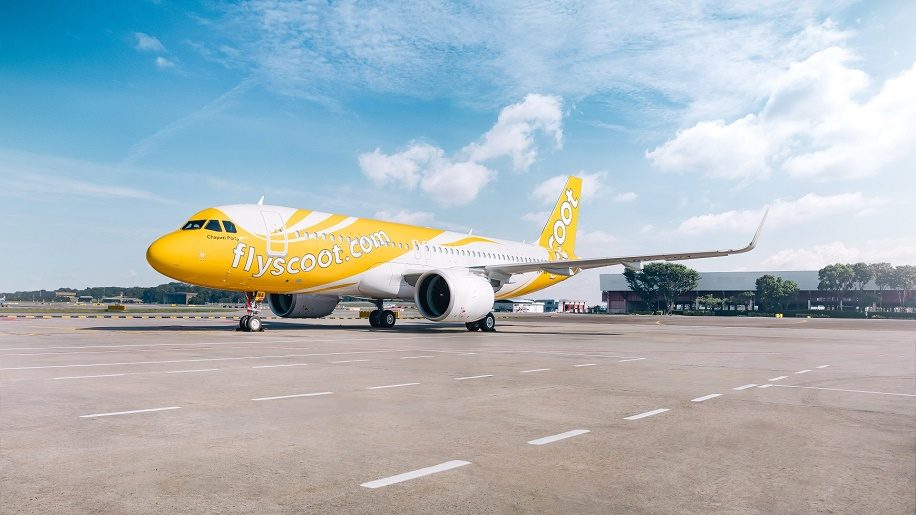
Singapore Airlines and Scoot
The Singapore Airlines (SIA) Group has launched a voluntary carbon offset programme. The programme allows customers on both Singapore Airlines and Scoot to offset their carbon emissions via dedicated microsites.
SIA says that the offset projects selected are ‘high-quality carbon offset projects [which] have a proven and measurable impact on communities and the environment.” The projects include
- protecting forests in Indonesia
- supporting renewable solar energy projects in India
- providing efficient, clean burning cookstoves for rural families in Nepal
Customers can also use KrisFlyer miles and HighFlyer points to offset emissions, at a rate of 150 KrisFlyer miles for every S$1.00 worth of carbon offset.
The offsets will be provided via the BlueHalo digital solution, which has been developed by Australia-based Tasman Environmental Markets (TEM). This allows customers to immediately calculate and offset the emissions associated with their journey.
Carbon emissions can be offset from either of the following two microsites:

Swiss
As with Lufthansa, Swiss offers three ways of offsetting your flight: buying Sustainable Aviation Fuel (SAF), certified climate protection projects (or a mix of the two).
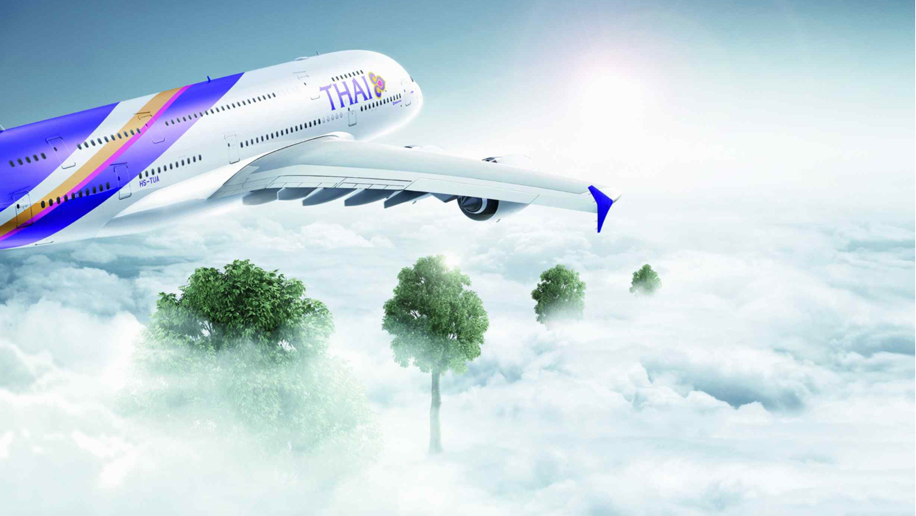
Thai Airways
Thai Airways uses the IATA-administered carbon offset program at the time of purchase of tickets. The option includes automatically calculating the amount of CO2 emitted for that particular flight and the related cost for the offset. The amount is then contributed to Kamphaeng Saen East Landfill Gas to Electricity hosted by Bangkok Greenpower Co., Ltd. a Clean Development Mechanism (CDM) projects Certified Emission Reductions (CERs)

Turkish Airlines
Turkish Airlines has launched a new carbon offset programme called Co2mission. The programme offers flyers the chance to offset the emissions form their flights with a selection of projects which can be chosen at the time of offsetting.
The projects supported are predominantly within Turkey, though there are also projects in Eritrea (cookstoves) and Uruguay (reforestation). The new Co2mission platform allows passengers to calculate the carbon offset amount with International Civil Aviation Organization (ICAO) methodology which considers route length, aircraft type, fuel consumption and numerous other factors. All of the projects have been accredited by VCS and Gold Standard.
The projects in Turkey are:
The Gezin Solar Power Project
This solar project is located in the Maden district of Küçükova village, in the Elazığ province of Türkiye. The project includes installing and operating four solar power projects as a bundle and has a total capacity of 3.83 Mwe with an estimated net electricity generation of 6963 MWh per year. The project is responsible for reducing 3,952 tonnes of CO2e per year.
Büyükdüz Hydroelectric Power Plant
Located in the Eastern Black Sea regional basin, Gümüşhane province, Kurtun district of Türkiye, this project has an installed capacity 70.844 MWm / 68.862 MWe. The project was commissioned and had been operating since 31 May 2012. It has an expected operational life of 35 years.
Bares II Wind Power Plant
This wind power plant is located in the Balıkesir province of Türkiye, near the coastline of the Marmara Sea. The project has been operational since 2006 and has 20 units of GE1,5SE wind power turbines with a total capacity of 30 MW. The project’s power plant has an estimated electricity generation of 109.9 GWh per year. The project activity will result in the annual emission reduction of 71,710 tonnes of CO2e.
In Eritrea the project is
Improved Kitchen Regimes Project
This involves the distribution of approximately 8000 fuel-efficient cookstoves to households within the Anseba district in Eritrea. These cookstoves are intended for domestic use. Biomass is used widely in rural areas of Eritrea as a domestic fuel. Consumption of biomass as fuel has led to deforestation, loss of biodiversity, and CO2 emissions. The project aims to reduce wood fuel consumption through the domestic use of efficient cookstoves. The distribution of stoves started on 9th March 2015. The project will lead to a 60-70 per cent reduction in the wood fuel demand. Activities of the project will help stop environmental degradation and greenhouse gas (GHG) emissions and improve the living standards of rural communities and provide better health conditions, especially for the women and children who are managing the stoves. The project is in line with the National Energy Program of Eritrea, which aims to deliver environmentally sound energy services.
In Brazil the project is
The Maisa REDD+ Project, Belém
The Maisa REDD+ Project is developed by the partnership between Biofilica Environmental Investments, Sipasa-Seringa, and Maísa-Moju Agroindustrial. It is located in Pará, in the city of Belém in Brazil. The project area has a historical background of land conflicts. This area faces the threat of deforestation due to timber production and extensive cattle ranching. The project is aimed to stop deforestation and forest degradation. Its activities cover three essential areas for forest conservation: climate, community, and biodiversity. Concerning climate subject, the project will result in emission reduction of a total amount of 2.023.743,8 tCO2eq. On average, the project activities will result in 67.458,1 tCO2eq emission reductions per year. The project aims to empower the local communities on the regional decision-making processes, which is vital for maintaining sustainable forest management practices. Lastly, the project supports biodiversity by helping to protect endangered species in its area. 8 tree species are endangered, and at least 29 animal species are at threat of extinction, as identified by comprehensive surveys.
United
United now offers the option of purchasing SAF (not offsetting your flight). It uses “your donation to purchase additional SAF or to invest in promising SAF producers we believe can move us one step closer to flying sustainably.”
“How does it work?
- We’ll collect your donation in a designated SAF account.
- At the end of the year, we’ll total the amount of donations, so be sure to check back to see how much we raised.
- United will use 100 per cent of the donations for the future purchase of SAF and/or SAF-blended products, or to invest in SAF development.”
Wizz Air
Wizz Air’s voluntary carbon offset scheme is with Chooose, a climate-focused technology company.
The airline’s website now allows passengers to calculate their flight’s environmental impact and offset the carbon emissions from their flight.
Wizz Air is supporting two projects; The International Small Group and Tree Planting Program (TIST) in Uganda, an award-winning and longstanding reforestation project, and the Pichacay Landfill Gas to Renewable Energy Project which is a landfill site for the municipal wastes of Cuenca in the province of Azuay, in Ecuador. This latter project recovers landfill methane which previously was released into the atmosphere, and delivers electricity to the grid. It is the first landfill in Ecuador in which landfill gas extraction and electricity generation are applied. Both projects are certified by the Verified Carbon Standard to measurable reduce emissions.

Independent sites
There are dozens, if not hundreds, of sites which will offset your emissions, for travel, for your household and for your purchases. The list here is not comprehensive, and it does not recommend these organisations.
Note that there is a strong argument that donating directly to charities which help those affected by climate change is the best way to spend your money. Carbon offsetting involves buying carbon credits and then ‘retiring’ them.
As the Financial Times points out “The voluntary offsets market is… fragmented and lacks consistent best practice guidance. A number of standard setting bodies exist, such as Verra and Gold Standard, which have different rules and methodologies.” Nevertheless, the market is growing each year, and Mark Carney believes the market for them could be worth $100 million by 2030. (You can read more about this here The Taskforce on Scaling Voluntary Carbon Markets)

You should also ask how much money is going towards the project. trees4travel, for instance, says that of the money donated for an offset, “67% tree planting & distribution, 18% development & income, 15% overheads.” Pure Leapfrog says “Handling fee is 30p for transactions up to £10 and 50p for transactions above £10. This means that we also have a minimum offset charge of £1 to be sure these costs are covered alongside your offset purchase.”
Works out your carbon footprint including your gas, electricity, what you buy and how much of it.
A sophisticated calculator that also offers the chance to offset your travel by purchasing SAF – which is very expensive, but much closer to what the true price of our travels is.
Fly Green is an online booking engine that offsets the flights you buy through it using part of its commission.
Myclimate’s calculator also offers the chance to work out your complete carbon footprint, or just your travel footprint.
Dedicated travel offset site. Recommended by the Business Travel Association for its members.












